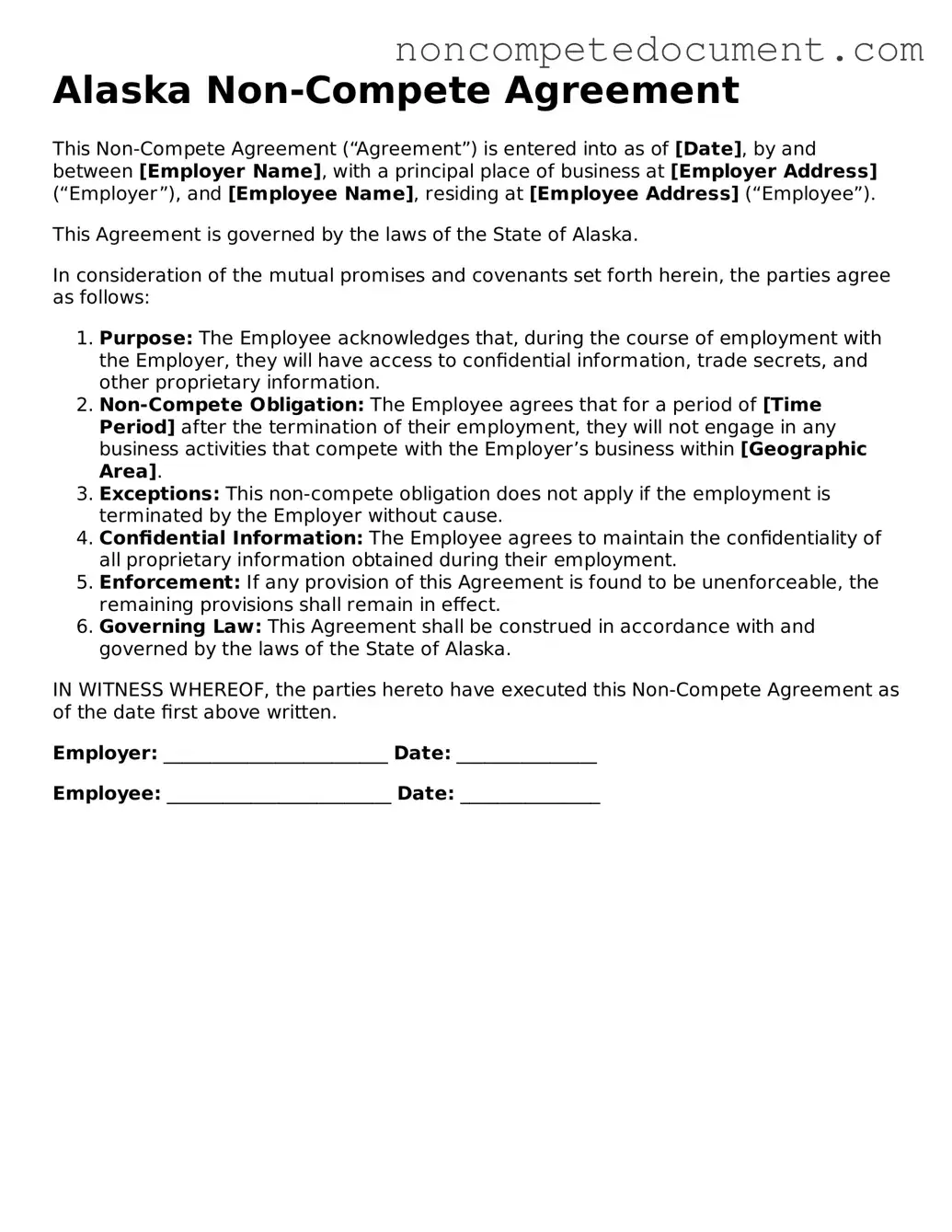Filling out the Alaska Non-compete Agreement form can be a complex task. One common mistake is failing to read the entire document carefully. Many individuals rush through the process, overlooking critical sections that outline their rights and obligations. This oversight can lead to misunderstandings and potential legal issues down the line.
Another frequent error involves leaving sections of the form blank. Each part of the agreement serves a purpose, and incomplete forms may result in the document being deemed invalid. Individuals should ensure that all required fields are filled in accurately to avoid complications.
Some people also misinterpret the scope of the non-compete clause. It is essential to understand the geographical limits and the duration of the restrictions. A vague understanding can lead to unintentional violations, which could have serious consequences for one's career.
Additionally, individuals sometimes fail to consider the implications of signing the agreement. They may not fully grasp how the non-compete could affect future employment opportunities. It is advisable to think critically about the potential impact on one’s career trajectory before agreeing to the terms.
Another mistake is not seeking legal advice. Many individuals believe they can navigate the agreement on their own. However, consulting with a lawyer can provide valuable insights and help clarify any confusing terms. This step can prevent costly mistakes and ensure that one's interests are adequately protected.
Some individuals also overlook the importance of negotiation. They may assume that the terms presented are non-negotiable. However, many employers are open to discussion. Engaging in a dialogue can lead to more favorable terms that better align with personal and professional goals.
Lastly, failing to keep a copy of the signed agreement is a common error. After signing, individuals should retain a copy for their records. This practice ensures that they have access to the agreement in case of any disputes or questions in the future.
